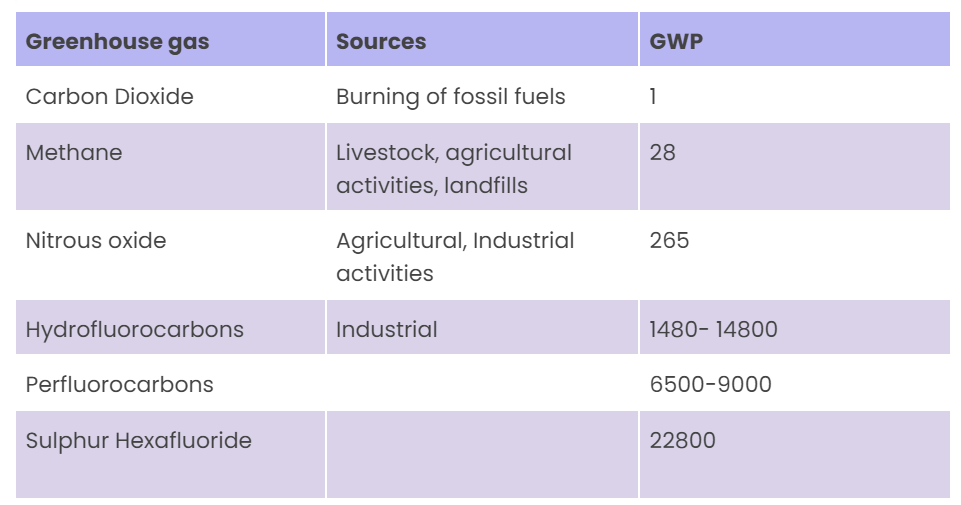2. Greenhouse gases and Greenhouse effect
An explanation of what is greenhouse gas, different types of green house gases and global warming potential. In this part you will earn about the various greenhouse gases and its effects to keep the planet warm.
A greenhouse gas is called so, as it absorbs infrared radiation from the sun in the form of heat, which is circulated in the atmosphere and eventually lost to space. When fossil fuels burn, they release greenhouse gases - mostly carbon dioxide (CO2). These gases trap the Sun's heat and cause the planet's temperature to rise. These emissions need to be measured and tracked in order to reduce it. The kyoto protocol listed six greenhouse gases : Carbon dioxide, methane, nitrous oxide, hydrofluorocarbons, perfluorocarbons and sulphur hexafluoride.
The global warming potential of all the gases is calculated with respect to CO2. The Global warming Potential value (GWP) is an index created from IPCC Fifth Assessment Report, 2014 (AR5)i.
Global warming potential is used to describe the relative potency, molecule for molecule, of a greenhouse gas, taking account of how long it remains active in the atmosphere.
In simple words, Global warming potential measures how much energy a greenhouse gas absorbs and how much heat it would trap in the Earth’s atmosphere in comparison to the same mass of carbon dioxide (CO2, also a Greenhouse gas). Each (GHG) Global Warming Potential is defined by the Intergovernmental Panel on Climate Change (IPCC) and is updated from time to time.

The AR5 values are listed because they are usually beneficial to calculate the impact these greenhouse gases are creating and can also be used for inventory and reporting purposes. The table below[3] gives the sources of some of the major (GHG) and their (GWP) potential.

Earth’s Greenhouse Effect
When the energy from the sun reaches the atmosphere, some is absorbed and some is reflected, mainly by clouds. Most of the remaining energy heats the earth’s surface, although again, a tiny fraction is reflected. The earth’s surface then loses its heat again through rising air currents, radiation, and the evaporation of water. The atmosphere re-emits the absorbed heat. Some escape to space, but some heats the earth’s surface again. This is also known as the Greenhouse effect. Eventually, all the heat escapes into space, but not before the temperature of the planet has been raised enough to allow us to live comfortably on earth. If greenhouse gasses didn’t absorb and re-emit heat, we wouldn’t be able to live on earth.